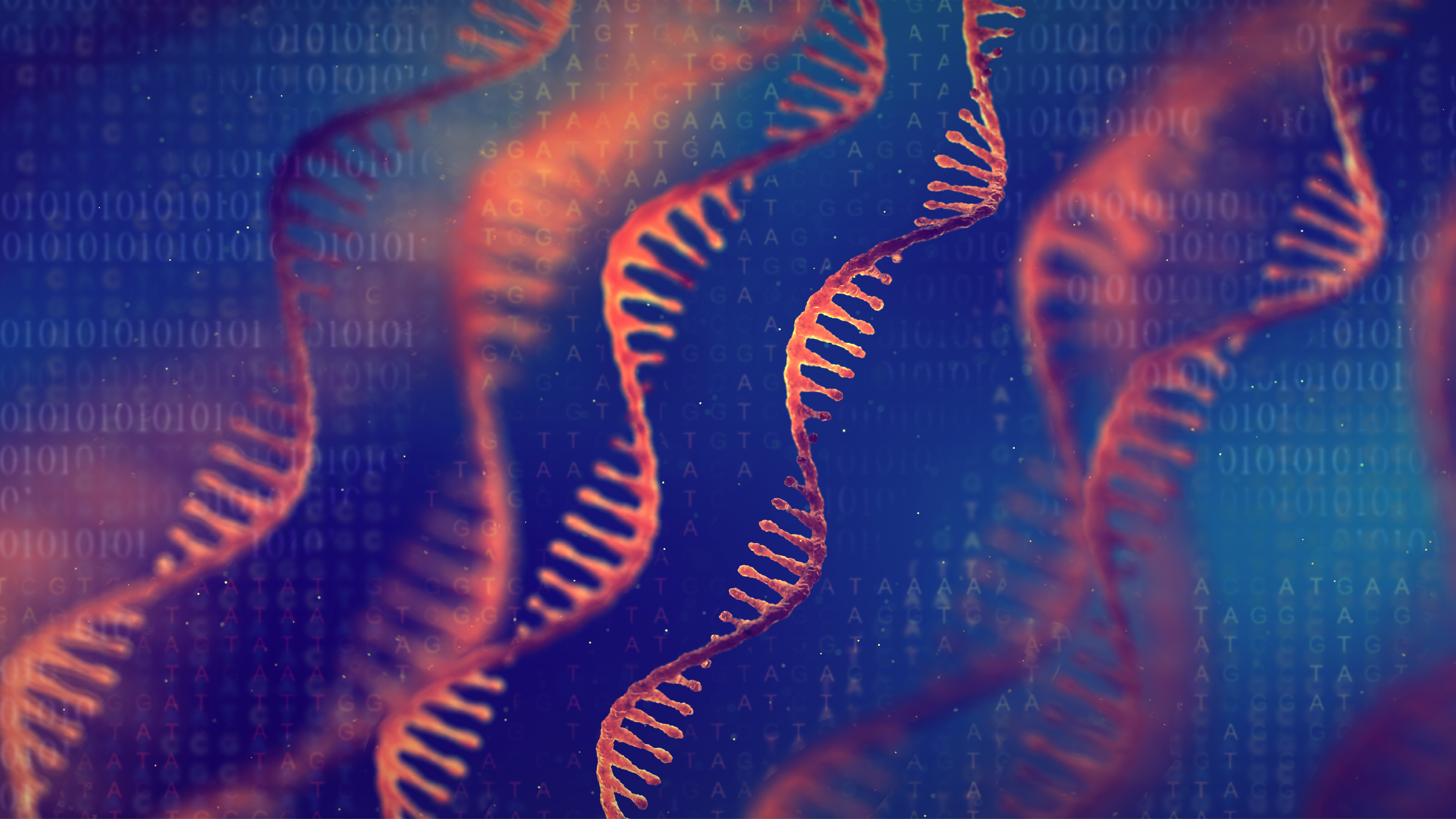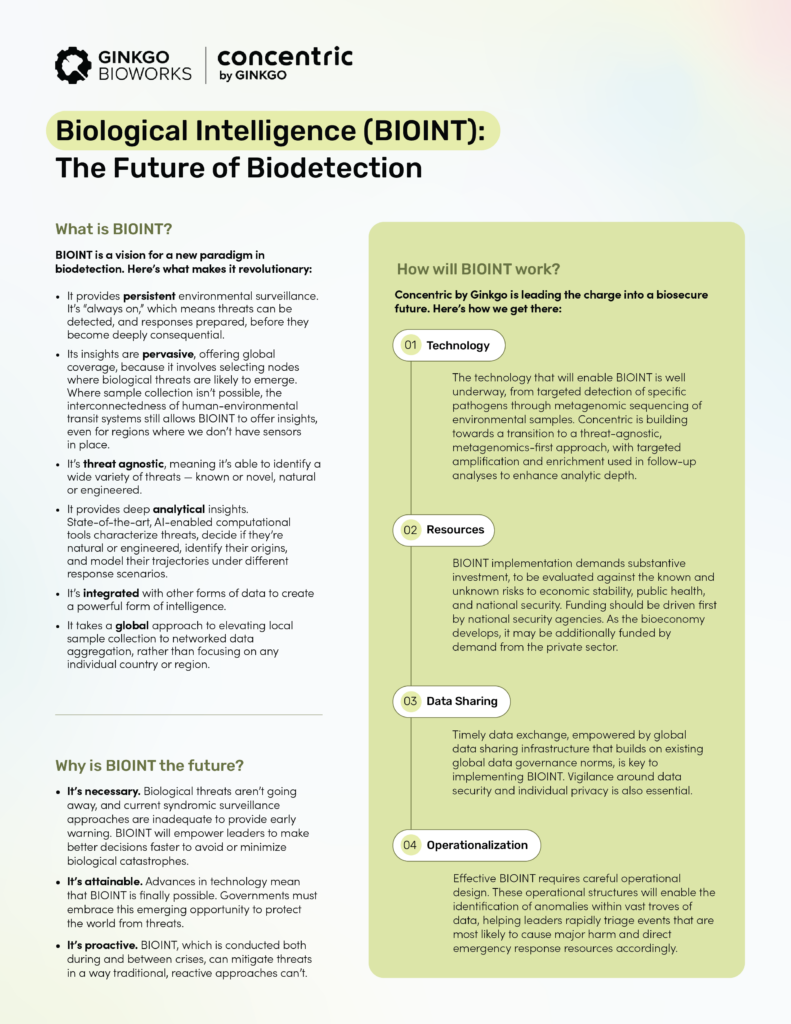A New Paradigm in Biosecurity: The Vision of BIOINT
December 18 2023

At the dawn of the Cold War, Dr. Edwin Land, the CEO of Polaroid, reported to US national security leaders that aerial photography was potentially “the most powerful single tool for acquiring information” behind the Iron Curtain and represented “a unique opportunity for comprehensive intelligence,” for both civilian and military uses.
Today, mapping and understanding the biological world presents a similar opportunity. Like imaging technology, sequencing and analysis of nucleic acids provides a massive trove of information, and this information is accessible and versatile.
Just as aerial imaging formed the basis for innovation in reconnaissance systems along with the modern geospatial intelligence (GEOINT) industry, at Ginkgo Biosecurity we believe nucleic acid sequencing should form the basis for substantial national security investment and a groundbreaking new intelligence industry based on biology—BIOINT.
In a new paper published in Health Security (co-authored by Swati Sureka), BIOINT is described as a new way to organize information about the world’s biological environment.
We have barely begun to leverage the potential of the biology around us—and a paradigm shift is needed to achieve the vision we lay out in the paper. We must work toward a future of consistently collecting, organizing, and utilizing our environment’s biological information—the way we currently do for other information sources.
A system that is “always on,” and delivers persistent and pervasive sampling and metagenomic analysis of environmental DNA and RNA forms the basis of BIOINT.
BIOINT builds upon and draws inspiration from a mosaic of existing biodetection systems and proposals, recognizing that these existing initiatives have been the backbone of historically important biosurveillance, but they are insufficient in scope and depth. We know that biological threats are increasing, and our current approaches are inadequate to provide early warning.
Persistent, or constant, environmental surveillance, conducted both during and in between crises, provides greater opportunity to achieve early warning and richer data on broader microbial and macroorganism ecology rather than any single threat, and has certainly begun to play a role in infectious disease surveillance.
The potential of analyzing environmental genomes has long been recognized as critical for public health and biodefense, as well as biodiversity conservation, ecosystem health, research, and the evolution of the bioeconomy, especially in the age of emerging artificial intelligence tools.
Our vision for BIOINT goes further, encompassing collection and metagenomic analysis of environmental samples that are drawn from a set of sampling sites that are identified and updated through risk modeling assessments, state-of-the-art analytics to rapidly characterize threats and model intervention and response scenarios, integration with other sources of data to produce point-of-decision intelligence, and a global approach to aggregating data.
Through BIOINT, we can glean valuable insights about the interconnectedness of human populations and biological systems and the dynamism and rapid pace of change within the biological world, laying the foundation for the future of global biosurveillance.
The vision for BIOINT
- A system that provides persistent environmental surveillance. It’s “always on,” which means threats can be detected, and responses prepared, before they become deeply consequential.
- Insights are pervasive, offering global coverage, because it involves selecting nodes where biological threats are likely to emerge. Where sample collection isn’t possible, the interconnectedness of humans and the environments still allows BIOINT to offer insights, even for regions where there are no sensors in place.
- It’s threat agnostic, able to identify a wide variety of threats — known or novel, natural or engineered.
- State-of-the-art, AI-enabled computational tools can characterize threats, decide if they’re natural or engineered, identify their origins, and model their trajectories under different response scenarios.
- By integrating with other forms of data, BIOINT creates a powerful form of intelligence.
- A global approach means that BIOINT will capture much more information when data is aggregated together into a global feed, as opposed to individual, local sample collection and analysis that sits siloed.

The technology that will enable BIOINT is well underway, and we are building towards a threat-agnostic, metagenomics-first approach to biosecurity that will help leaders rapidly triage events that are most likely to cause major harm and direct emergency response resources accordingly. Our vision also relies on timely data exchange, empowered by global data sharing infrastructure that builds on existing global data governance norms. Vigilance around operational design, data security, and individual privacy is also essential.
BIOINT will empower leaders to make better decisions faster to avoid or minimize biological catastrophes. Advances in technology mean that BIOINT is finally possible. Governments must embrace this emerging opportunity to protect the world from threats. Because BIOINT relies on environmental monitoring conducted both during and between crises, it can mitigate threats in a way traditional, reactive approaches can’t.
